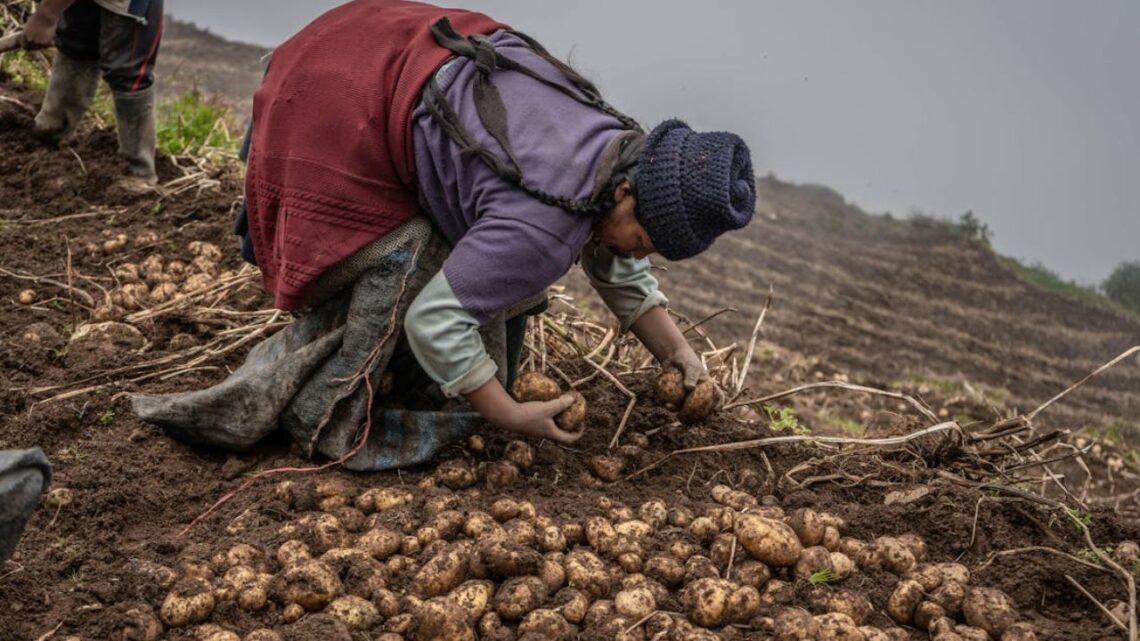Deep in Peru’s Andes, a quiet revolution is underway. Traditional practices of burning crop residues are giving way to mulching, and farmers are reaping a bounty never seen before.
With improved soil moisture, reduced weed pressure, and higher potato yields, mulching is reshaping the agricultural landscape—turning ashes into abundant harvests.
The Problem with Burning
For generations, farmers have burned leftover stalks and straw after harvest to clear fields quickly. But this practice comes with big downsides:
- Loss of soil organic matter
- Increased erosion and compaction
- Higher fire risk and air pollution
- Poor water retention in soils
With climate change making rainfall more erratic, soils need all the resilience they can gain.
Why Mulching Works
Mulching involves covering the soil surface with plant residues—such as cereal straw, legume stems, or even pine needles—to create a protective layer. Here’s how it helps:
- Retains moisture: The mulch layer slows surface evaporation.
- Suppresses weeds: Less sunlight reaches the soil, reducing weed germination.
- Improves soil health: Over time, residues break down and feed soil microbes and organic matter.
- Moderates temperature: Keeps soil cooler on hot days and warmer on cold nights.
- Reduces labor: Less weeding and less input cost.
Transformational Impacts In Peru
In pilot regions of the La Libertad highlands—particularly around Chugay—farmers using mulching on potato plots have achieved:
- Yields of ~40 tons per hectare in demonstration plots
- In exceptional cases, as high as 80 tons per hectare
- Cutting back on weeding and chemical inputs
- Reviving soils that had been degraded by repeated burning
- Safeguarding against drought stress through better water retention
These successes are startling because they double, and in some cases quadruple, typical regional yields under conventional systems.
Mulching has also been trialed in coastal desert settings, where degraded soils were brought back to life using the same approach of mulch + minimal soil disturbance.
These experiments showed that even in harsh, dry lands, mulching helps restore fertility and supports more robust potato growth.
How Farmers Can Adopt Mulching
- Select suitable materials
Use leftover straw, stalks, or plant residues. In forested zones, pine needles or needles mixed into straw can also work. - Lay it carefully
Spread a consistent layer—thick enough to shade soil, thin enough not to suffocate young plants. - Use combined practices
Mulching works best when paired with reduced tillage—less soil disruption lets structure and microbes recover. - Track progress
Monitor labor time, input costs, soil moisture, and yield to compare against traditional methods. - Scale gradually
Start with part of a field or pilot plots, learn the challenges, then expand adoption.
Data Overview- Mulching in Peru
| Parameter | Observed Value or Range | Significance |
|---|---|---|
| Demonstration yield | ~ 40 tons/ha | Already much higher than local averages |
| Peak yield | Up to 80 tons/ha | Shows extreme potential in best conditions |
| Labor savings | Reduced weeding and lower input costs | Improves profitability |
| Soil improvement | Increased organic matter, better moisture retention | Enhances long-term productivity |
| Climate resilience | Less risk under irregular rainfall | Stabilizes yields under stress |
| Versatility | Works in highlands and desert plots | Broad applicability across landscapes |
Challenges & Considerations
- Mulch availability: Some farmers struggle to find enough residue or biomass.
- Initial adoption costs: Labor to gather and distribute mulch can be high in the first seasons.
- Pest risks: Thicker mulch layers may harbor pests if not managed carefully.
- Knowledge gap: Farmers need training to balance mulch depth, timing, and interactions with crop management.
In spite of these challenges, the results so far suggest that with extension support and farmer collaboration, the transition is feasible and promising.
Why This Matters Today
Peru is home to a vast diversity of potato varieties, and millions depend on potato farming for both food and income.
As climate change introduces stronger droughts and more temperature variability, the shift from burning to mulching offers a climate-smart, low-cost, locally adapted solution.
In turning ashes into mulch, Peru’s farmers are rediscovering resilience—and prosperity—in their fields.
What begins as wasted straw or ash in the fields is being transformed into a regenerating layer of life beneath Peru’s potato crops.
Through mulching, farmers are protecting soil, cutting labor, and realizing yields once thought unattainable.
From the highlands of La Libertad to experimental desert farms, the shift from burning to mulching is proving that sustainable agriculture doesn’t just conserve—it revitalizes.
As more farmers embrace this method, Peru’s potato heritage stands renewed, resilient, and richer than ever.









